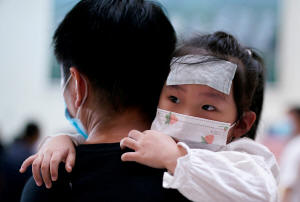|
Shaanxi is seeking public opinion on allowing an additional half
a year of maternity leave on top of the current 168 days. That
would put the province in the same league as European nations
like Germany or Norway.
Shaanxi is also considering doubling the length of paternity
leave to 30 days for couples looking to have a third child.
China announced in May that married couples may have up to three
children, after data showed a dramatic decline in births in the
world's most populous country.
The decision to let families have up to three children was
initially met with doubts on whether it would make much
difference. There were also calls for details on what supportive
measures would be included.
Since then, 14 provinces including Shaanxi have either amended
local family planning rules or are seeking public opinion to
make amendments to laws to confer extra maternity or paternity
leave.
Some have even created a new form of leave - "child-raising
leave" - for couples with children aged 3 or below, state media
reported on Wednesday.
The southern island province of Hainan is offering one hour of
child-raising leave each day, for parents with children under 3.
The province of Heilongjiang even allows couples in border
cities to have four children, due to the below-average birth
rate in China's remote northeastern region.
In 2016, Beijing scrapped its decades-old one-child policy and
replaced it with a two-child limit to counter a rapidly aging
population.
But that failed to boost births, partly due to the relatively
high cost of raising children in urban China - a challenge that
persists to this day.
China had a fertility rate of just 1.3 children per woman in
2020, recent data showed, on par with aging societies like Japan
and Italy.
(Reporting by Albee Zhang and Ryan Woo; Editing by Kim Coghill)
[© 2021 Thomson Reuters. All rights
reserved.] Copyright 2021 Reuters. All rights reserved. This material may not be published,
broadcast, rewritten or redistributed.
Thompson Reuters is solely responsible for this content.

|
|




